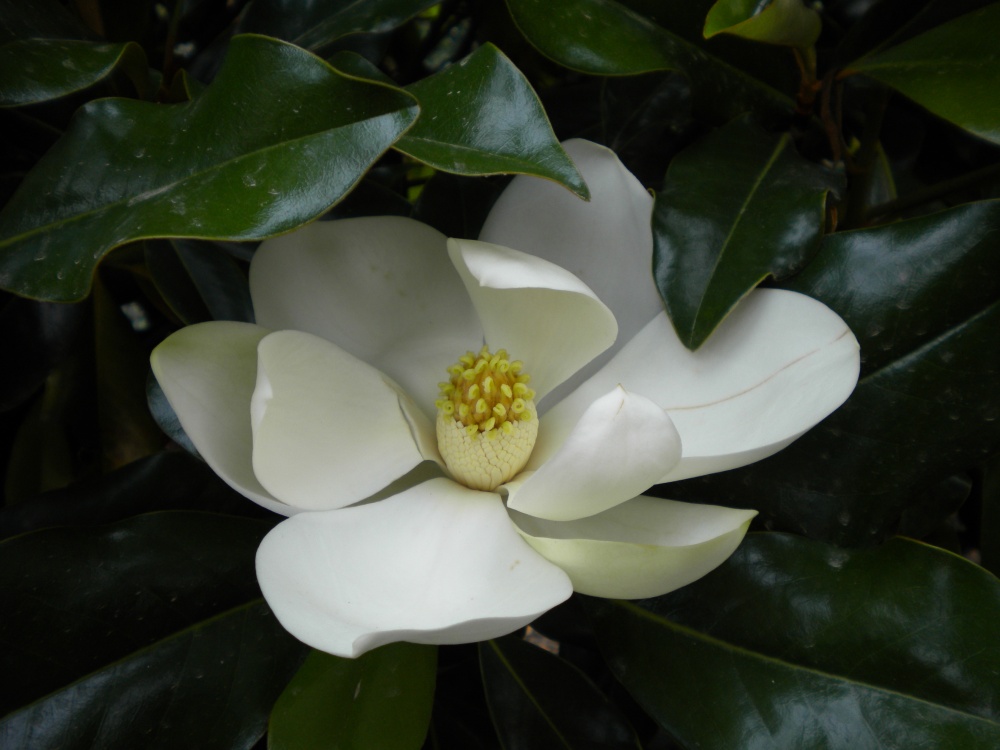….. And stopping for a few moments to smell the daphnes (Daphne odora ‘Aureo-marginata’, below).
I don’t need to tell anyone that the weather has been most inhospitable for most of March, so I’ve fallen behind in taking care of the garden’s spring cleanup. In most years I’m finished (or nearly so) by the start of April, but I’ve worked only a few hours here and there through March, and there’s much still to be done.
I’m not too bothered by running behind. I’ve accomplished just enough that the garden’s not a disaster area, though there are areas that remain a mess through the year (and sometimes carry over from year to year). I’m not too disturbed by this either. There’s something bothersome to me about an immaculate garden, at least that’s the rationale that allows me to leave debris here and there for months (or longer).
The lawn tractor is broken, so that must be repaired, and since it pulls a cart that often is used to haul branches and junk, the progress in cleaning up is going slower than it would otherwise. After adding onto the garden for nearly twenty five years there’s hardly enough lawn to substantiate a riding mower, but I have flashbacks to the drudgery of pushing a mower when I was a kid, and I’m not going back there. Even if the mowing takes only a half hour, I’m sitting to mow, not pushing, so if the tractor repair is too expensive it will be time for a new one. I’m hoping the repair will be a simple one, but I haven’t gotten around to looking underneath to figure it out yet. Maybe next weekend, but it must be done soon since the lawn will begin to grow sometime this spring, I suspect.
I’m planting a few things in the area where brush and brambles were cleared out late in the autumn. And, I’ve decided that the tall columnar blue spruce that declined over the years as shade encroached must come out. I pruned the thin and dead lower branches in early winter, and at the time I suspected that I wouldn’t be happy with it, but now it’s clear that it must go. Many spruces lose their lower limbs as they age, and this looks fine at the back or edge of the garden, but this spruce is planted at the front corner so that it’s somewhat of a focal point. The look of the chopped lower branches and the thinning top branches irritated me more every time I saw it. So, it’s coming out, to be replaced with an evergreen magnolia (Magnolia grandiflora ‘Brackens Brown Beauty’, above) .
Fortunately, there’s space for the magnolia for at least the next twenty years, though I might have to transplant a few of the smaller shrubs that are planted nearby as it grows. If the magnolia is too large for the area eventually, well, join the club. It won’t be the only tree that’s overgrown in this garden. If a gardener lives long enough, plants will grow too large. I can transplant them around, prune, chop them out, or let nature take its course so that the larger plant overwhelms the smaller until it dies out.
The evergreen magnolia is better suited than the spruce to the partial shade cast by the nearby Bigleaf magnolia (Magnolia macrophylla, above) and purple leafed beech (Fagus sylvatica ‘Purpurea’). The spruce was planted when these trees were not so large, and when the shade from the neighboring forest didn’t encroach so far into the garden. So, I will not chalk the failure of the spruce off to just another design mistake, but to “these things happen”.
Keep writing. I so enjoy your posts. I too have been nurturing my bit of space in New Baltimore for over 20 years and I can so relate to a lot of your experiences. My 15 30 foot high Leyland Cypress trees are thinning at the bottoms not to mention inside due to lack of sun because I planted them to close 20 years ago as a road block. I will look onto the evergreen magnolias.Thanks.